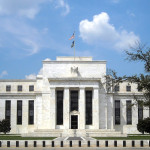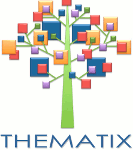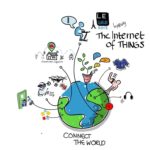Early Structured Data: Precedents to FIBO

The mother of the COBOL computer language, Rear Admiral Grace Brewster Murray Hopper, readily torpedoed the words “We’ve always done it this way”, citing this expression as a most damaging phrase in any language. Regarding the ways in which we do, in fact, communicate, she insisted “we must have a language and a structure that will take care of the data descriptions and priorities, as well as the operations we wish to perform.” Ms. Hopper, a pioneering computer scientist for the U.S. Navy throughout the 20th century, won the first Computer Science Man-of-the-Year Award in 1969, and today you can find her motto “Dare and Do” affixed to the active guided missile destroyer the USS Hopper. So, Ms. Hopper demanded more structured, efficient, and meaningful languages than those used in the past. And the World Wide Web is amidst an ever-progressing shift in how languages construct structured web documents, for those languages to signal and deliver even more precise meanings to search engines, optimizing the relevance of the search results (operations) we produce (perform) every day. The Semantic Web (once known as the ‘Ontology Web‘) connects logic with language to produce meaning. Web engineers use semantic technologies such as referenced ontologies (e.g., Schema.org). Web technologists are also standardizing emerging industry-specific ontologies, or industry-normative taxonomies, to serve Line of business (LOB) semantics (i.e., domain-specific ontologies) for newspapers, libraries (e.g., LOC MOD), project management, art museums, biomedicine, biochemistry, genetics, the Life Sciences, IT services, the insurance industry (in tandem with ACORD), the mortgages industry, automobile manufacturers and car dealers, a comprehensive Semantics of Business Vocabulary and Business Rules (SBVR) standards, the eXtensible Business Reporting Language (XBRL) standard, the travel industry, and across financial institutions ontologies, within that industry. Seems like we’ve some a long way from stuffing keywords into web pages, now that we are applying syndetic (connecting) structures to syntactic semantics (Schema for indicating ‘meaning’), and an exhaustively thorough understanding of semantic ontologies was updated just last September within the Object Management Group’s — the OMG‘s Ontology Definition Metamodel (ODM) — with XML Metadata Interchange (XMI) files included.
Early Financial Services Structured Data Markup
For the financial services industry many semantic web experts cite Dow Jones Corporation’s Factiva (initially named, ‘Dow Jones Reuters Business Interactive’) as the first large-scale project that deployed industry-specific structured data (taxonomies & ontologies) to finance domain-specific publications. Today, after multiple iterations and industry acquisitions, News Corporation‘s Factiva and LexisNexis are the leaders for high-end aggregated global financial and business news publishing. Yet, a comprehensive financial products and services industry markup language standard initiative began just one month after Factiva.com was launched: FpML (Financial products Markup Language), first proposed by J.P. Morgan and PricewaterhouseCoopers (PwC) in June 1999. IBM, SWIFT and other organizations joined this effort, a markup initiative focused on OTC derivatives markets (over-the-counter derivatives are traded between two parties, not through financial exchanges or intermediaries). FpML is overseen by the International Swaps and Derivatives Association (ISDA). The FIX Protocol standard, begun in 1992 for financial service entities’ securities trading, is now overseen by the FIX Trading Community, The Banking Industry Architecture Network (BIAN), founded in 2008, continues to work with the OMG and The Open Group to develop financial services interoperability frameworks.

But what of banks as institutions themselves — how might they more effectively:
a) Communicate more efficiently with other banks (e.g., buy & sell others’ loans);
b) Provide transactional transparency for regulatory authorities (e.g., comply with U.S. Treasury and Federal Reserve Board regulations), and, most importantly;
c) Speak more precisely and transparently with savings & loans consumers?
Financial Services: Schema & FIBO
Well, in 2012 we welcomed FIBO, the Financial Industry Business Ontology™, at an EDMC and OMG hosted conference, Demystifying Financial Services Semantics (subtitled: The Business Value of Data and Semantics) , during which we were presented “The Financial Industry Business Ontology” (by Mike Bennett, Director and Founder, Hypercube; Head of Semantics and Standards, EDMC), followed by “Financial Industry Business Ontology in Operations” (a discussion led by David Newman, SVP, Enterprise Technology Architecture & Planning, Wells Fargo). FIBO is overseen by the OMG Finance Domain Task Force (FDTF); FIBO OMG EDMC updates are found on this OMG Wiki; and, Adaptive, headquartered in Orange County, CA, kindly provides a visual FIBO concepts model. Here’s Dennis Wisnosky, the former CTO and Chief Architect for the US DoD Office of the Secretary of Defense (OSD), concisely introducing banking executives and semantic ontologists to the FIBO vocabulary (i.e., financial institutions’ financial instruments in the semantic world) in February of 2014. It was in February, 2013 that Dennis Wisnosky was appointed to lead the enterprise standards implementation process for the Enterprise Data Management Council’s (EDMC) Financial Industry Business Ontology (FIBO).
Financial Services: the FIBO Ontology
 In considering the depth of FIBO’s orchestration, standardization, and the importance of FIBO for the financial industry, Caliber called upon Elisa Kendall, a principal at Thematix Partners, an Object Management Group (OMG) architecture board member, and key contributor to the Financial Industry Business Ontology (FIBO). [Note Ms. Kendall’s presentation, “Ontology Engineering in UML“.]
In considering the depth of FIBO’s orchestration, standardization, and the importance of FIBO for the financial industry, Caliber called upon Elisa Kendall, a principal at Thematix Partners, an Object Management Group (OMG) architecture board member, and key contributor to the Financial Industry Business Ontology (FIBO). [Note Ms. Kendall’s presentation, “Ontology Engineering in UML“.]
Question: “What is the impact of FIBO for the financial industry, to date?”
Answer: “FIBO has been the occasion for a wide range of industry subject matter experts [SMEs] to weigh in on the vocabulary that they use from day-to-day. This is perhaps the first time the industry as a whole has coalesced on standardized terms of art. What makes this lexicon different from any other is that it is rendered as an ontology, enabling not only clear and unambiguous communication between human beings, but as well, reasoning and classification by machines. This ability could conceivably avoid the next meltdown.”
Financial Services: FIBO & SEO
What are the SEO ramifications connected to FIBO’s arrival? Caliber’s Emergent SEO is based on Schema, and Schema (along with other methods of applying structured data vocabularies to web documents, such as RDFa and JSON-LD) is derived from industry-specific lexicons. As FIBO matures to standardize the structures within its vocabularies’ terminologies so will those frameworks yield even greater utility within the Semantic Web — the Ontology Web — providing much more precise search results (i.e., “findability“) for the financial institutions that have implemented this explicit, specific and rigorous markup to the respective financial services and financial instruments. Beneficiaries will include commercial banks, brokerages, credit unions, investment banks, insurance agencies, foreign currency exchanges, and other financial services entities‘ offerings.
—–
Update, May 2015: Schema.org has assembled a select working group, working under the project title of FIBO.Schema.org, and Caliber Media Group will be assisting in setting the Financial Industry’s Schema.org Ontology.
And, here’s a sneak-peak into FIBO Schema as proposed/developing within Schema.org December, 2015.
—–
Side-note | Addendum
Federal agencies that are (or will be) involved in FIBO developments:
Bureau of Consumer Financial Protection (CFPB)
Commodity Futures Trading Commission (CFTC)
Federal Deposit Insurance Corporation (FDIC)
Federal Housing Finance Agency (FHFA)
Federal Reserve Board (FRB)
Financial Stability Oversight Council (FSOC)
Government Accountability Office (GAO)
Municipal Securities Rulemaking Board (MSRB)
National Credit Union Administration Board (NCUAB)
Office of the Comptroller of the Currency (OCC)
Office of Financial Research (OFR)
U.S. Securities and Exchange Commission (SEC)
U.S. Department of the Treasury





